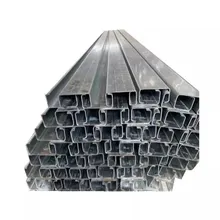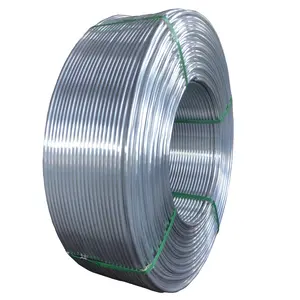Top categories

Wire Mesh

Stainless Steel

Alloy Steel

Non-ferrous Metal

Metals & Metal Products

Carbon Steel

Iron & Iron Products
About products and suppliers
Introduction to Aluminium Alloy Rods
Aluminium alloy rods are versatile materials widely utilized in various industries due to their excellent strength-to-weight ratio and corrosion resistance. These rods are crafted from a combination of aluminum and other elements, enhancing their mechanical properties and making them suitable for diverse applications.
Types and Applications
The range of aluminium alloy rods includes options like the 7075 aluminum round bar and aluminium wire rods, each tailored for specific uses. The 7075 round bar is known for its use in aerospace applications due to its high strength, while aluminium wire rods are often employed in electrical transmission applications. Other types, such as aluminum bronze tig rod and aluminum welding rods 4043, are selected for their welding and joining capabilities in construction and industrial fabrication.
Features and Materials
Aluminium rods are available in various alloys, with each offering unique features. For instance, aluminum bronze tig welding rod is renowned for its superior strength and resistance to corrosion in marine environments. On the other hand, 5356 filler rod is often used for welding magnesium-containing aluminum alloys due to its excellent color match after anodizing.
Advantages of Aluminium Alloy Rods
The advantages of using aluminium alloy rods are manifold. They are lightweight yet strong, making them ideal for structural applications where weight reduction is crucial. Additionally, their resistance to corrosion extends the life of products made from them. The versatility of aluminium rods is further expanded with varieties like low temp aluminum brazing rods and ultra bond aluminium brazing rods, which allow for effective joining of aluminum parts at lower temperatures, thus preserving the integrity of the materials being bonded.
Selection Considerations
When selecting an aluminium alloy rod, it is essential to consider the specific requirements of the project. Factors such as tensile strength, flexibility, and thermal conductivity will determine the suitability of a rod for a particular application. For specialized tasks, products like the hobart aluminum brazing rod offer tailored solutions that can meet the demands of specific joining processes.
Conclusion
Aluminium alloy rods are a fundamental component in numerous industrial processes, offering a balance of durability, workability, and performance. With a broad spectrum of types and specialized options available, these rods continue to be a staple in manufacturing, construction, and engineering sectors.

























 浙公网安备 33010002000092号
浙公网安备 33010002000092号 浙B2-20120091-4
浙B2-20120091-4